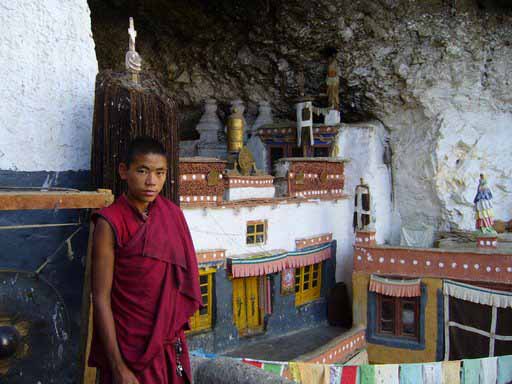|
Phugtal
By far the most spectacularly
located monastic establishment anywhere in Ladakh, The Phugthal complex
spills out of the mouth of a huge cave high up in the sheer mountain face
of a lateral gorge through which a major tributary of the southern Lungnak
(Lingti-Tsarap) River flows. Perhaps, the most isolated monastic establishment
of Zanskar, its foundation date back to the early 12th century ; at least
one old chappel, among the several several of which it is composed, has
frescos and ceiling decorations reflecting strong Indian artistic and iconographic
influence. Phugthal is accessible from the Padum-Manali trekking route
through a 7 km long trail that branches off from the Purney Bridge on the
main trail. A visit to Phugthal, including Bardan and Muney monasteries
enroute, makes a good 5-days round trek from Padum. Alternatively, one
can add one extra day to Padum-Manali trekking itinerary to include a day-return
visit to this unique monastic establishment inhabited by a resident community
of about 40 monks.
 How to Reach?
How to Reach?
The 240 km long Kargil-Padun
road, of which the first 90 km stretch is paved, remains opened from around
mid July to early November. The J&K SRTC operates a thrice weekly B-class
bus service from Kargil. However groups can charter A-Class or even Super-Deluxe
buses to visit Zanskar, including the interior places of interest like
Stongdey, Zangla and Karsha. Jeeps and Gypsy taxis can also be hired at
Kargil. During June and early July, prior to opening of the road, it is
recommended to walk into Zanskar from panikhar or Parkachik onwards. In
June, the summer is at its height in the region and the climate is ideal
for trekking along the route free from vehicular traffic of any kind and
when the countryside is freshly rejuvenated into life after months of frigid
dormancy.
....Back
All
rights reserved. 
 |







